
Exophthalmus is a genus of broad-nosed weevils in the family Curculionidae. It contains 85 described species.
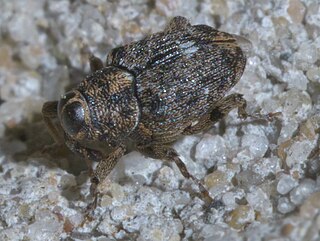
Lechriopini is a tribe of true weevils in the beetle family Curculionidae. There are more than 20 genera and 510 described species in Lechriopini.
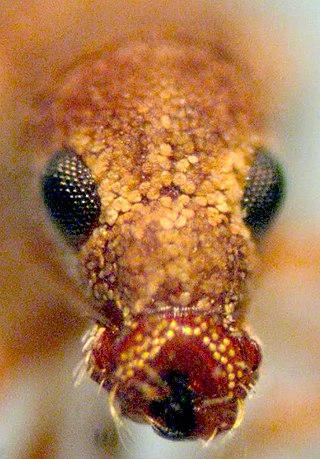
The Anypotactini are a Neotropical weevil tribe in the subfamily Entiminae. It includes 81 described species.

Entimini is a Neotropical weevil tribe in the subfamily Entiminae that includes 46 described species.

Eustylini is a primarily Neotropical weevil tribe in the subfamily Entiminae.
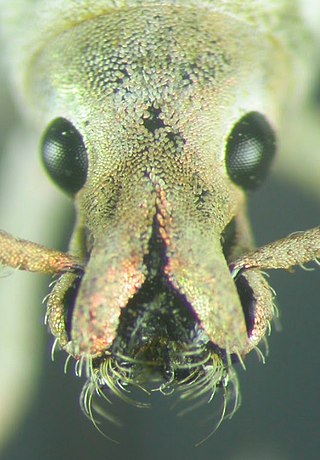
Compsus is a genus of broad-nosed weevils in the family Curculionidae, distributed across the Americas, primarily in northern South America.

Tranes is a genus of true weevils in the beetle family Curculionidae. There are about 11 described species in Tranes.

Hadromeropsis is a genus of broad-nosed weevils in the beetle family Curculionidae.
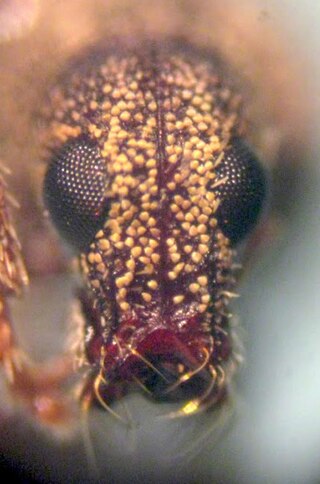
Polydacrys is a genus of broad-nosed weevils in the beetle family Curculionidae, subfamily Entiminae, tribe Anypotactini, present across the Americas and the Caribbean. There are eight described species in Polydacrys.

Polyteles is a South American genus of broad-nosed weevils in the subfamily Entiminae, tribe Entimini. There are seven described species distributed in Argentina, Bolivia, Brazil, Ecuador, Paraguay, Peru, and Uruguay.
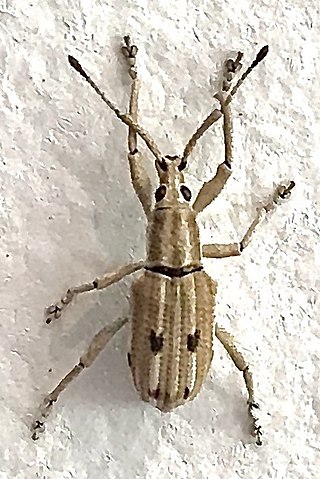
Eustylus is a neotropical genus of broad-nosed weevils in the subfamily Entiminae, tribe Eustylini.
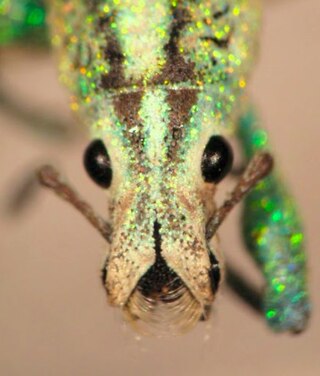
Oxyderces is a genus of broad-nosed weevils in the family Curculionidae distributed in South America. It can be recognized by the presence of dense setae on the apex of the rostrum and postocular setae.

Exorides is a genus of broad-nosed weevils in the family Curculionidae, tribe Eustylini, distributed in northern South America.

Oxyderces viridipes is a species of broad-nosed weevils in the family Curculionidae. This species is endemic to Colombia, commonly found in Medellín and surrounding areas, but has been incidentally collected in the United States.
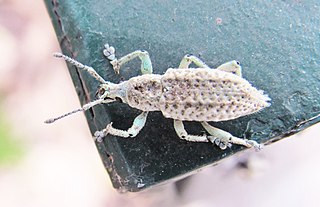
Compsus canescens is a species of broad-nosed weevils in the family Curculionidae. This species is endemic to Colombia, commonly found in Bogotá and surrounding areas.
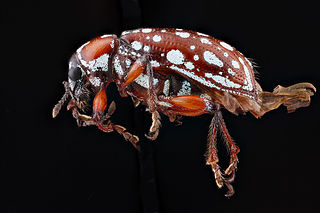
Lachnopus is a genus of broad-nosed weevils in the family Curculionidae distributed in the Caribbean Region.

Xestogaster is a South American genus of broad-nosed weevils in the family Curculionidae.
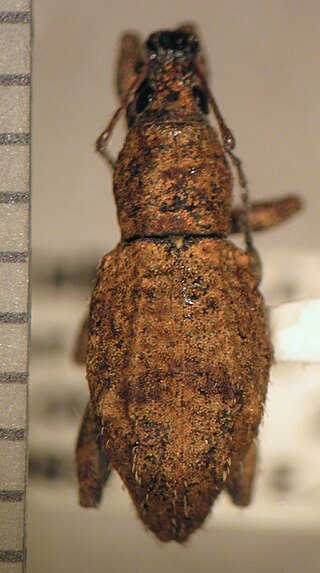
Synthlibonotus is a genus of broad-nosed weevils in the family Curculionidae distributed in northern South America.

Anypotactus is a genus of broad-nosed weevils in the beetle family Curculionidae, subfamily Entiminae, tribe Anypotactini, present across Central and South America. There are six described species in Anypotactus.

Cyrtomon is a genus of broad-nosed weevils in the beetle family Curculionidae, present only in South America. There are six described species in Cyrtomon.



















